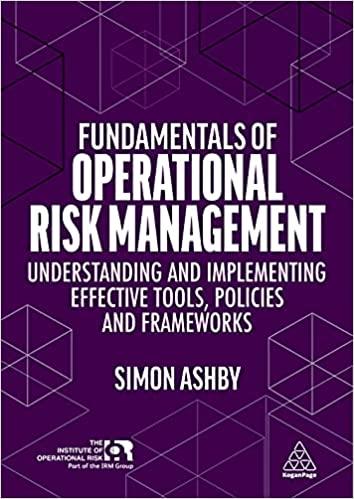Question
Predictive Analytics and Profit Analysis Problem Description Leveraging customer financial data to facilitate credit decisions surrounding loans. In this case [1] , making a correct
Predictive Analytics and Profit Analysis
Problem Description
Leveraging customer financial data to facilitate credit decisions surrounding loans. In this case[1], making a correct decision means that the bank correctly predicts a customer's credit is in good standing and hence is able to provide a loan that will be repaid. On the other hand, if the bank predicts that a customer is in good standing and the opposite is true, then the bank will suffer a loss. Overall the case illustrates how decisions surrounding customer credit data impact a financial institution's cost/profit perspective.
German Credit Data
The German Credit data set is a publicly available data set downloaded from theUCI Machine Learning RepositoryLinks to an external site.. The German Credit Data contains data on 20 variables and the classification of whether an applicant is considered a Good or Bad credit risk for 1000 loan applicants. The task requires exploring the data and building a predictive model to provide a bank manager guidance for making a decision on whether to approve a loan to a prospective applicant based on his/her profile.
Problem Background
Assume that a correct decision by the bank would result in 35% of the profit at the end of a specific period, say 3-5 years.
- Here a correct decision means that the bank predicts that a customer's credit is in good standing (and hence would obtain the loan), and the customer is indeed has good credit.
- On the other hand, if the model or the manager makes a false prediction that the customer's credit is in good standing, yet the opposite is true, then the bank will result in a unit loss.
- Note that the data has 70% credit-worthy (good) customers and 30% not-credit-worthy (bad) customers. A manager without any model that gives everybody the loan would result in the following negative profit per customer: (700*0.35- 300*1.00)/1000 = -55/1000 = -0.055 unit loss.
- This number (-0.055 unit loss) may seem small. But if the average of the load is $20,000 for this population (n = 1000), then the total loss will be (-0.055 unit loss)*($20,000 per unit per customer)*(1,000 customers) = -$1,100,000 (LOSS).
The Bank has provided you with a labeled dataset containing the 1000 credit records broken down as follows:
The Bank would like you explore the use of the following predictive analytical tools in modeling this problem: Regression, Decision Tree, and Neural Network. The would like you to identify their most profitable customers.
[1] Dua, D. and Graff, C. (2019). UCI Machine Learning Repository [http://archive.ics.uci.edu/ml]. Irvine, CA: University of California, School of Information and Computer Science
What you would do, how you would do it?
In your submission, you must: Outline the steps you would take and briefly explain your reasoning.
Your approach should consider these elements:
- General Problem Background/Literature Review
- Data Processing/Pre-Processing
- Exploratory Data Analysis
- Modeling
- Comparative Analysis
- Visualization & Reporting
- Recommendations
Step by Step Solution
There are 3 Steps involved in it
Step: 1

Get Instant Access to Expert-Tailored Solutions
See step-by-step solutions with expert insights and AI powered tools for academic success
Step: 2

Step: 3

Ace Your Homework with AI
Get the answers you need in no time with our AI-driven, step-by-step assistance
Get Started


